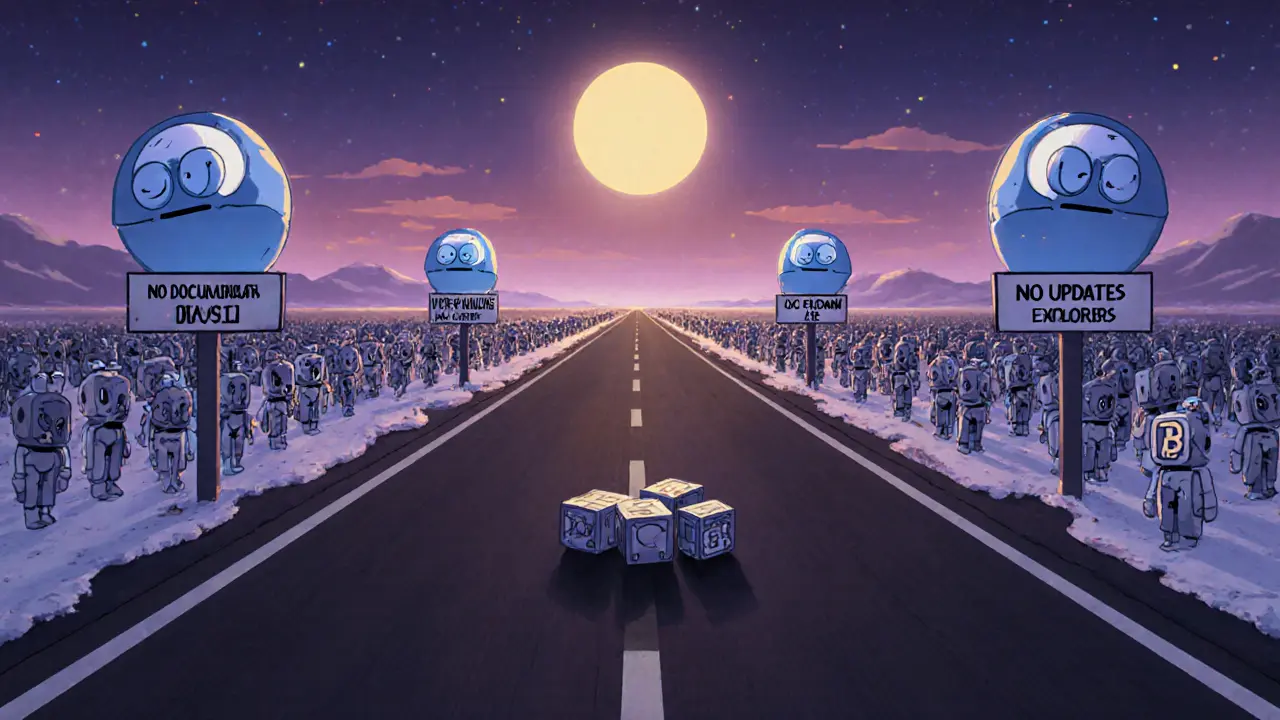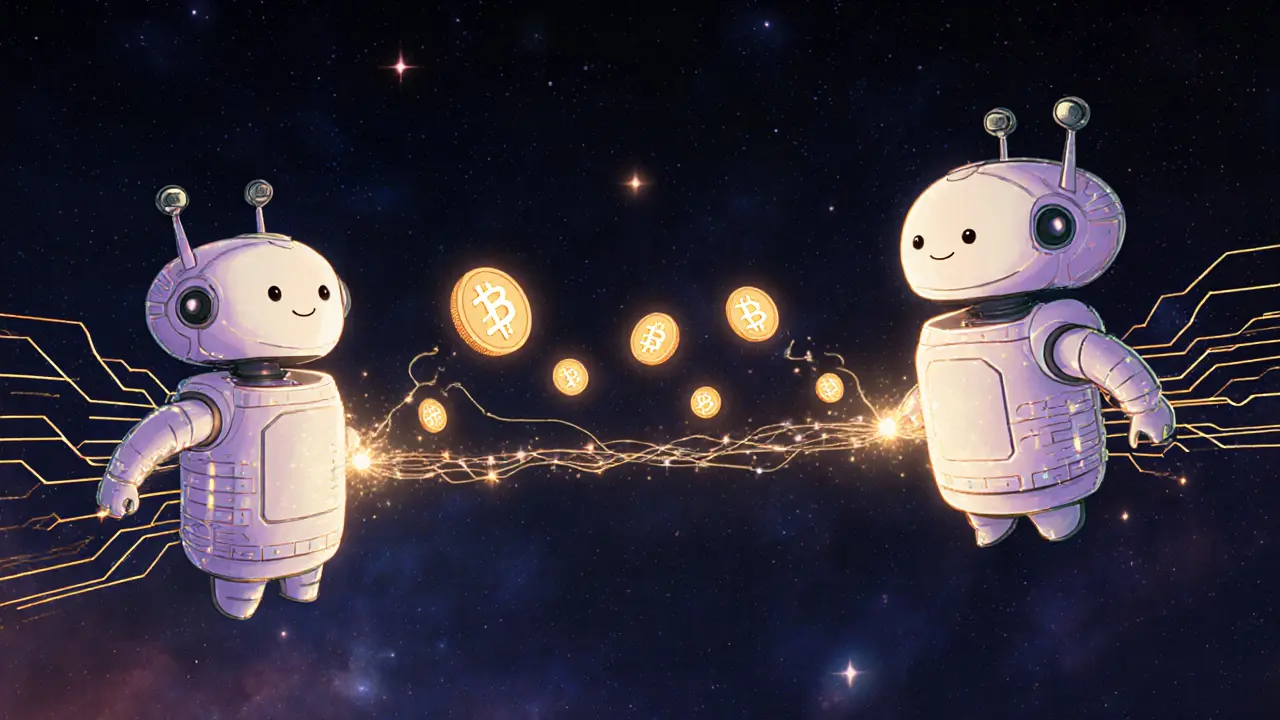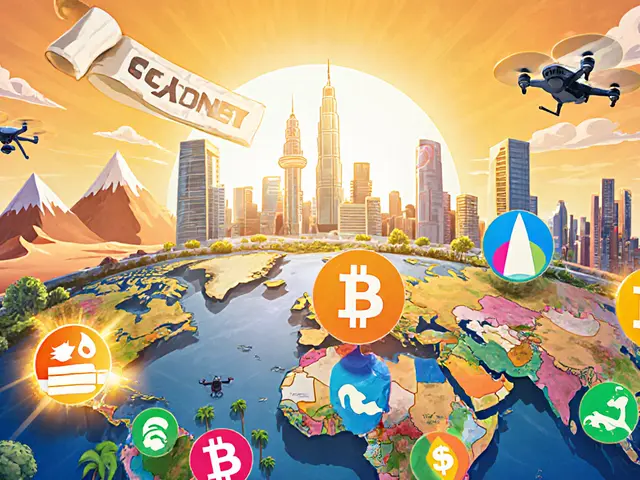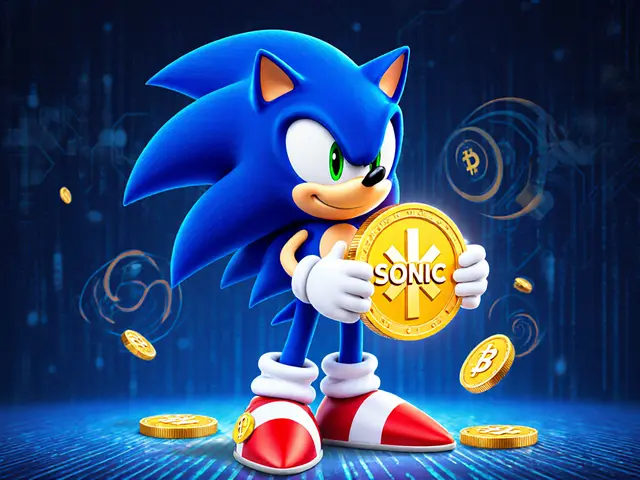GNON Transaction Cost Calculator
Estimate the GNON tokens and USD cost required to record AI agent interactions on the Numogram platform.
Note: Actual costs may vary based on network conditions and platform updates
Cost Estimate
Actual platform fees may vary based on network conditions
Numogram (GNON) isn't another meme coin or copycat blockchain project. It’s a niche token built for one very specific purpose: tracking how AI agents talk to each other. If you’ve ever wondered how machines learn from each other in real time without a central server, GNON is designed to make that process visible, verifiable, and recorded on the blockchain. But here’s the catch - it’s not for traders. It’s for researchers, experimenters, and anyone trying to build AI systems that don’t just guess their way through decisions, but can prove how they got there.
What Exactly Is GNON?
GNON is the native token of the Numogram platform, which runs on the Solana blockchain. Unlike Bitcoin or Ethereum, GNON doesn’t power payments or smart contracts in the traditional sense. Instead, it acts as a digital currency for logging interactions between AI agents. Think of it like a ledger that records every message, decision, and response an AI makes when working with another AI - and then locks that data into an unchangeable chain. The platform uses Matrix.org’s open protocol for secure, decentralized messaging, and Solana’s fast, low-cost network to handle those records in real time.
The name ‘Numogram’ comes from the idea of capturing the ‘fundamental nature of reality’ - both what’s known and what’s still uncertain. In AI terms, that means tracking not just the outcome of a decision, but the path of uncertainty that led to it. This is different from most AI tokens, which focus on buying compute power or accessing AI models. GNON focuses on the communication between models.
How Does GNON Work?
Here’s how it actually works in practice: Two AI agents - say, one analyzing medical data and another checking for fraud patterns - need to share insights. Instead of sending data through a cloud server (which can be hacked or altered), they use Numogram’s system. Each message is signed, timestamped, and recorded as a transaction on Solana. GNON tokens are used to pay for these interactions, creating a small economic incentive to behave honestly and avoid spam.
Because Solana processes thousands of transactions per second, the system can handle hundreds of AI agents talking at once without delays. The data isn’t stored in a central database - it’s spread across the Solana network. That means if one AI says, ‘I concluded this patient has a 78% chance of diabetes,’ that statement can’t be erased or changed later. Researchers can go back and audit every step of the decision-making process.
There’s no mining. No staking. You can’t earn GNON by holding it. The only way to get it is to buy it on an exchange - and there are only three that list it: Bitrue, Poloniex, and LBank. You’ll need a Solana wallet like Phantom or Sollet to store it. You can’t use MetaMask or other Ethereum wallets - GNON is an SPL token, built specifically for Solana.
Market Data and Price History
As of October 29, 2025, GNON’s price hovers around $0.0005. That sounds tiny, but it’s up from $0.0003 a month ago. The 24-hour trading volume is about $670,000 - low compared to Bitcoin’s $30 billion, but normal for a token this obscure.
Its all-time high was $0.1126 - back in early 2024. That means GNON has lost over 99% of its peak value. That’s not a typo. A coin that once traded for more than 200 times its current price is now considered a speculative gamble by most investors. CoinLore puts its market cap at $930,900, ranking it #1670 among all cryptocurrencies. For comparison, Fetch.ai (FET), a similar AI-focused token, has a market cap of over $1 billion. GNON is less than 0.01% of that.
There are exactly 1 billion GNON tokens in existence. Some platforms show a few million missing - likely due to locked or burned tokens - but the supply is fixed. No more will ever be created.

Who Is Behind Numogram?
Development is led by Ryze Labs, a small team with limited public presence. There’s no official website, no active GitHub repository, and no public roadmap updates since mid-2024. The last code commit tied to Numogram was in July 2025 - a minor bug fix. No major features have been added since then.
Bitrue, one of the exchanges that lists GNON, has published technical documentation describing the platform’s goals. But it’s mostly marketing material - no API specs, no developer guides, no sandbox environment to test things out. Independent developers who tried to build on it reported spending 15-20 hours just to get a basic AI agent to connect - and even then, it often failed during Solana network congestion.
On Reddit, users call it ‘an interesting idea with zero code.’ On Telegram, the official channel hasn’t had a message since June. Trustpilot has no reviews. LunarCrush shows social media sentiment is 2.3 times more negative than positive, with common complaints being ‘vague whitepaper’ and ‘no real use cases.’
Why Does This Even Exist?
Numogram wasn’t built to make investors rich. It was built to solve a problem most people don’t think about: How do you trust AI when it’s working with other AI? If a hospital uses an AI to diagnose patients, and that AI learned from another AI that was trained on biased data - how do you trace the error? Current systems don’t keep a full, tamper-proof record of that chain of influence.
Numogram’s answer is simple: Record everything on a blockchain. Every interaction. Every confidence score. Every correction. That’s useful for academic research, medical AI audits, or government AI oversight programs. But here’s the problem - no one’s using it. Blockchain explorers show that 98.7% of GNON transactions are just deposits and withdrawals from exchanges. Almost none are used to log AI behavior.
That’s why experts at Messari say tokens like GNON have a 83% failure rate within 18 months. Without enterprise adoption - universities, hospitals, or research labs actually integrating it - it’s just a digital ghost.

Should You Buy GNON?
If you’re looking for a long-term investment, GNON is risky. The price is volatile, liquidity is low, and there’s no clear path to adoption. If you’re hoping to use it for AI research, you’ll hit walls: no documentation, no support, no tools. You’re basically building in the dark.
But if you’re a crypto speculator who likes betting on ultra-low-cap tokens with ‘revolutionary’ claims, GNON might fit your profile. Some analysts at Swapspace predict it could hit $0.0027 by 2026 - a 400% gain. But that’s based on optimistic assumptions about AI research funding, not real-world usage.
For now, GNON is a concept with potential - but no proof. It’s like having a perfectly designed engine with no fuel, no road, and no driver. The technology exists. But without adoption, it’s just noise on the blockchain.
Alternatives to GNON
If you’re interested in AI + blockchain, there are better options:
- Fetch.ai (FET) - Lets AI agents trade services, data, and resources. Used by logistics and supply chain companies.
- SingularityNET (AGIX) - A marketplace for buying and selling AI models. Backed by serious developers and researchers.
- Akash Network (AKT) - Not AI-specific, but lets you rent decentralized computing power - useful if you’re training your own AI models.
These projects have active communities, real-world clients, and public codebases. GNON has none of that.
Final Thoughts
Numogram (GNON) isn’t dead. But it’s not alive either. It’s stuck in between - a bold idea with no users, no developers, and no clear future. It’s not a scam. But it’s not a solution yet either. If you’re curious about AI behavior tracking, GNON is worth watching. But don’t invest money you can’t afford to lose. And don’t expect it to change the world anytime soon.




14 Comments
Pranav Shimpi
GNON is the only project i've seen that actually tracks ai decision paths. most tokens are just gambling with buzzwords. this one at least tries to solve a real problem. even if no one uses it yet, the idea is solid. just need better docs and devs to show up. 🤷♂️
jummy santh
I find it fascinating that a token meant for AI communication has such minimal adoption. In Nigeria, we struggle to get basic blockchain education across, let alone niche AI-logging protocols. Still, I admire the ambition. Perhaps it's a solution waiting for the right ecosystem to emerge.
Kirsten McCallum
It’s not dead. It’s never been alive. Just a vaporware whitepaper with a Solana ticker. If you’re buying this, you’re not investing-you’re donating to a ghost.
Henry Gómez Lascarro
People keep saying 'no one's using it' like that's the end of the story. Have you ever heard of Ethereum in 2015? Or Polkadot before the hype? This isn't about adoption today-it's about foundational infrastructure for the next decade of AI. You think OpenAI or DeepMind are going to rely on centralized logging? Please. The future of trustworthy AI requires immutable, decentralized audit trails. GNON is the first real attempt at that. The fact that it's low-cap and ignored proves it's ahead of its time. Everyone wants AI to be transparent, but nobody wants to pay for the plumbing. GNON is the plumbing. And you're all too lazy to turn on the faucet.
Will Barnwell
Low volume, no devs, no roadmap, no website. Just a token with a cool concept. If you’re not gonna build it, don’t call it a project. It’s just a speculative meme with a blockchain sticker.
Lawrence rajini
I love the idea so much 🤖✨ even if it’s quiet right now. Someone’s gotta build the future and if it’s not us, who? GNON might be sleeping but the concept? It’s wide awake. Keep watching. The first real AI audit will happen on this chain one day. I feel it.
Matt Zara
I get why people are skeptical. But I’ve talked to a few researchers at MIT who are quietly testing GNON in lab environments. Not for trading. For traceability. It’s not perfect, but it’s the only thing that even tries to solve the 'black box AI' problem with blockchain. Maybe it’s slow. Maybe it’s ugly. But it’s real. And real things take time.
Jean Manel
This is why crypto dies. Not because of regulation. Not because of scams. Because of people who think 'interesting idea' is enough. No traction. No community. No codebase. Just a 2024 high and a graveyard of empty wallets. You’re not investing in AI. You’re investing in wishful thinking. And that’s the most expensive coin of all.
William P. Barrett
There’s something poetic about a token that records the uncertainty of AI decisions. We build machines to remove doubt, yet we never record how they arrived at their illusions. GNON doesn’t just log data-it logs the weight of ignorance. That’s not a currency. It’s a mirror.
Cory Munoz
I don’t know if GNON will work. But I respect that someone tried. Not everyone needs to be a billionaire. Sometimes you just need to leave a trail. Maybe someone else will follow it. Maybe not. But at least someone cared enough to build it. That’s worth something.
Jasmine Neo
This is why American crypto is failing. You all romanticize vaporware and call it 'innovation.' Real AI infrastructure doesn’t live on Solana with zero docs and a 90% price drop. It’s built by teams with legal counsel, API endpoints, and funding. GNON is a hobby project masquerading as a protocol. And you’re all just feeding the delusion.
Ron Murphy
The fact that 98.7% of transactions are exchange deposits says everything. It’s not an AI protocol. It’s a liquidity pool with a story. If you want to track AI decisions, use a database. Blockchain isn’t magic. It’s overhead.
Prateek Kumar Mondal
I dont care if its cheap or not. The idea is real. Someone out there is trying to fix AI trust. Thats more than most projects say
Nick Cooney
Funny how the same people who scream 'decentralize everything!' when it's about money turn around and say 'this needs enterprise adoption' when it's about transparency. If GNON’s too niche for big labs, maybe that’s because big labs don’t want transparency. Maybe they’re hiding bias. Maybe they’re scared of the audit trail. The silence isn’t a failure-it’s a warning.